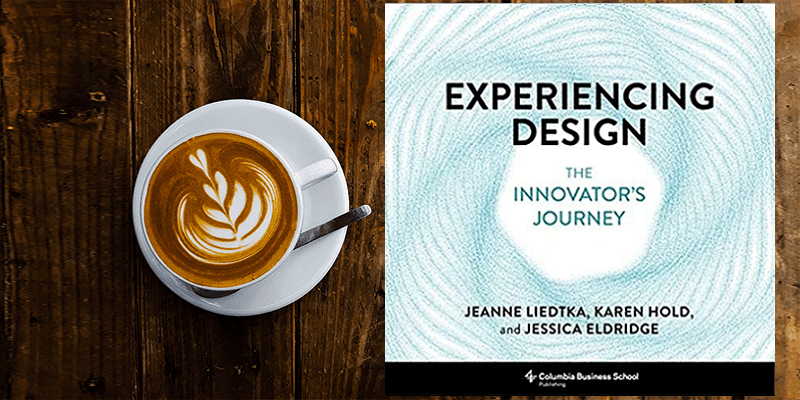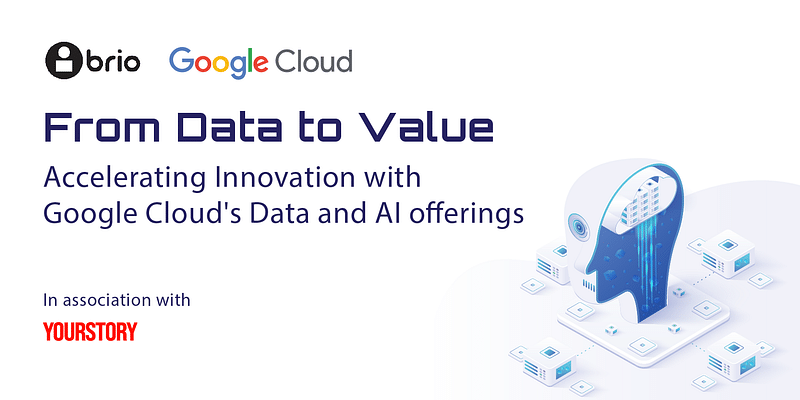From creative competencies to innovator journeys: how design thinking transforms mindsets and personalities
This must-read book charts the abilities and emotional evolution of design thinkers in their quest for innovation. Here are some takeaways and insights.
Launched in 2012, YourStory's Book Review section features over 310 titles on creativity, innovation, entrepreneurship, and digital transformation. See also our related columns The Turning Point, Techie Tuesdays, and Storybites.
Going beyond tools and processes, the inner evolution of a design thinker is well captured in the compelling new book, Experiencing Design: The Innovator’s Journey, by Jeanne Liedtka, Karen Hold, and Jessica Eldridge.
While technology, customers, and other industries as sources of innovation have been well addressed elsewhere, this valuable book brings the focus back to creative individuals and organisations. Design thinking (DT) is not just about tools and processes but a shift in mindset and personality, the authors explain.
Jeanne Liedtka is a faculty member at the Darden Graduate School of Business Administration, University of Virginia. Her earlier book is Problem Solving With Design Thinking (see my book review here, and our d.Zen ('Design Zen') section for more resources on design and design thinking).
Karen Hold is the founder of Experience Labs, an innovation consulting firm. Jessica Eldridge is the founder of Spark Strategic Solutions.
“DT gives us a chance to become more real – to get in touch with our authentic human selves, to restore some of the wonder and creativity that we had as children, but have lost,” the authors begin.
The book is well researched, with over 100 notes and references. The 15 chapters make for an absorbing and informative read, with plenty of actionable insights and frameworks. The online companion offers downloadable extracts from the book as well.
Here are my key takeaway from the compelling 285-page book, summarised as well in the tables below. See also my reviews of the related books Design Your Thinking, Creative Confidence, Customer-Driven Transformation, Deliver Great Products that Customers Love, Creative Thinking Handbook, and Innovator’s DNA.

Foundations
DT is being extensively used for innovation. The authors describe the objectives of innovation: to give better choices, reduce cost or risk, increase likelihood of implementation, and increase adaptability of individuals and organisations.
Challenges in innovation include designing for customers who may not know what exactly they want, rushing too soon to solutions, coming up with too many options, and fearing failure as a sign of incompetence.
Biases also get in the way, and are of three types: personal (projection, emotion, ego), target (say/do gap, acceptable responses), and process (confirmation, initial solution). Immersion, open-ended questioning, and co-creation are called for to overcome these biases.
DT helps in this regard via empathetic understanding, team diversity, a range of testable solutions, and structured processes for dialogue. DT is thus a “social technology” of collaboration, conversations, respect and inclusion.
“DT is innovation’s equivalent of TQM,” the authors explain.
“Creating transformational experiences for others on the outside first requires transformation on the inside,” the authors emphasise.
This process of doing-experiencing-becoming during DT leads to an innovator’s personal transformation. It yields much more than creative confidence, the authors affirm. Effectively doing and experiencing DT leads to becoming a better design thinker and innovator.

Discovery
The six steps in DT are divided into two phases: discovery and testing. Each step calls for a set of minimum viable competencies (MVCs).
Immersion calls for a shift in perspective to better understand, value, and adopt the perspective of others, the authors explain. MVCs here include awareness of bias, deep listening, presence, developing bonds, and probing questions.
“Stepping into open-ended exploration can be unsettling,” the authors caution. Furthermore, people often listen to respond or judge rather than to understand. Domain expertise can even get in the way here, as well as dislikes towards others.
The problem definition itself is a hypothesis, and precedents from the past may not apply. Impatience and an emphasis only on efficiency can be obstacles as well, the authors add.
Sensemaking calls for reflection on the data gathered above, to uncover patterns, themes, and the directions forward. MVCs here are summarising, inferencing, identifying tacit needs, questioning assumptions, patience in research, and listening to different views.
Actual proof comes only later, while testing. Double-loop learning is called for, which involves questioning the question itself.
“Visualisation becomes critical as we move from individual to collective Sensemaking,” the authors describe. This can help overcome feelings of being overwhelmed with messy qualitative data, and draw connections between data points.
Psychological safety is needed in this phase, as well as a positive mood and energising environment. Tools like journey mapping and personas help dig deeper in a structured manner.

Alignment involves moving from personal perspectives to a collective mindset. Design criteria and collaborative action are defined based on agreed-upon rules of engagement, the authors explain.
MVCs here include dialogue through turn-taking, mutual respect, openness to other perspectives, collective learning, and prioritisation of attributes. Facilitators should carefully manage and guide the conversation for collective flow, the authors recommend.
The next phase, emergence, can probably be regarded as a combination of divergence and convergence in other definitions of DT. It involves brainstorming, combining ideas, and scenario creation. The focus is on collaborative creation rather than picking a winning idea.
“The group needs to stay in the ambiguity of the possibility space and continue to explore. This means resisting retreat to the comfort of compromise, often the easiest path to quick, collective decision-making,” the authors caution.
MVCs here include active co-creation, building on others’ ideas, and exploring multiple and unusual ideas. The overall aim is to find higher ground, not just common ground, the authors emphasise.
Challenges arise in unwillingness to let go of one’s own ideas, lack of confidence in one’s own creativity, and fear of suggesting less-formed ideas and appearing incompetent. As a group, the challenge is to create new knowledge as compared to finding knowledge that is already out there.
For each of the phases, the authors also specify tools that help in the respective activities (see examples in the table below). But DT is about the inner creator as well, and not just toolsets and skillsets.

Testing
Effective testing depends on the speed of learning, and having the mindset of a scientist (experimentation, learning from failure) and investor (accepting that many startups may fail). Innovation, after all, combines invention/ideation and implementation.
Imagining brings ideas to life through prototypes, storyboards, sketches/videos, models, and storytelling. Critical assumptions are testing iteratively through feedback, and strategy is made real.
MVCs here include building artifacts, negotiating tradeoffs, capturing concepts and experiences, and co-creation with users and partners. All five senses should be engaged where possible, the authors add.
Learning in action involves designing experiments to learn from them and iterate solutions. Assumptions should be prioritised and tested, but this involves a level of emotional detachment while assessing data.
MVCs at this step include handling contradictory data, refining ideas, triangulation, and following a hypothesis-driven approach. Defensiveness, fear of failure, and inability to unlearn can get in the way here, the authors caution.
“The design of experiments takes every bit as much ingenuity and creativity as the design of the idea itself,” they emphasise. “Much of the power of DT lies in design doing,” the authors add.

Personas of design thinkers
Not all innovators or design thinkers are the same. The authors identify four types of personas, each of whom has different experiences, strengths, challenges and contributions to the phases of the DT journey.
These four personas are driver, influencer, analyst, and supporter. DT leaders, facilitators, and coaches need to figure out how to combine the best of each in unique ways (see my takeaways in the table below).

For example, drivers are competitive and direct, and focused more on the end result than the process. But they may have a hard time in immersion and sensemaking, get more comfortable in alignment, frustrated with brainstorming, impatient in imagining, and defensive during experimentation.
“Supporters take deep and personal ownership of the team as a unit,” the authors observe. They value trust and camaraderie, but can compromise on accuracy in the face of confrontation. They provide stewardship, but sometimes at the expense of their own opinions.
Influencers are most inclined to the DT process, and are talkative, empathetic, and agreeable. They embrace immersion, but can be overwhelmed during sensemaking, and excited during sensemaking. They may rush through emergence, but need to slow down in imagining and become detached during experimentation.
Analysts are more objective and proof-driven. They usually get off to a slow start in DT, and may even be skeptical about the process in the beginning. But they are invaluable in the testing phases, and help keep the team from moving ahead prematurely.
Readers will appreciate the level of detail in this outstanding section of the book. It maps DT journeys of each persona, along with facilitator tips, coachable moments, and quotes from sample teams.

(source: ExperiencingDesign.org)
Personal and organisational development
The last section of the book ties it all together, with comprehensive checklists, surveys and roadmaps for individuals and organisations to map, reflect on, and improve their MVCs in each phase of the DT journey. The appendices provide details for nine such surveys.
Individuals should assess their own creative competencies, and request evaluations from peers as well. Goals, plans and actions should be executed, with further cycles of assessment and improvement.
For example, on a scale of 1 through 5, there should be assessments of awareness of own’s biases, ability to develop empathetic bonds, and interviewing skills. Steps for improvement can involve following up on interviews, engaging with coaches and leaders, and reading relevant books.
Based on their earlier wishlist of innovation outcomes, the authors offer surveys for organisations to assess their choices of offerings, likelihood of implementation, adaptability, and collaboration.
For example, specific questions address overcoming employee biases, improving stakeholder feedback, increasing sense of ownership, presence of a common DT language, organisational culture, and strength of collaboration in internal teams and external networks.

The road ahead
The book is packed with examples and scenarios of creativity, innovation and DT in action. Examples include the musical Hamilton (history combined with hip-hop), Roald Amundsen (learning from the Inuit for his polar expedition), United Nations (dialogue for peacekeeping missions), US Navy (prototype for foldable wings), and Logitech (DT embedded in organisational culture).
As parting thoughts, the authors stress the importance of a culture of continuous learning and adaptation, skilled coaches, and ample training for employees and managers. Small problems and not just “wicked problems” should also be the focus of DT.
“Leaders who successfully tap into the potential of DT see themselves as conveners and guardians of a culture and a dialogue, rather than architects of solutions,” the authors sum up.
“Building a supportive scaffolding that safeguards the innovation conversation itself is the most important contribution leaders can make,” the authors sign off.
YourStory has also published the pocketbook ‘Proverbs and Quotes for Entrepreneurs: A World of Inspiration for Startups’ as a creative and motivational guide for innovators (downloadable as apps here: Apple, Android).
Edited by Teja Lele















